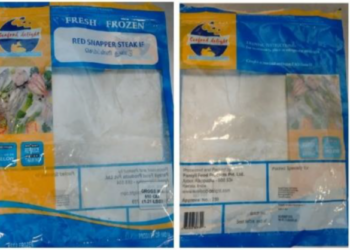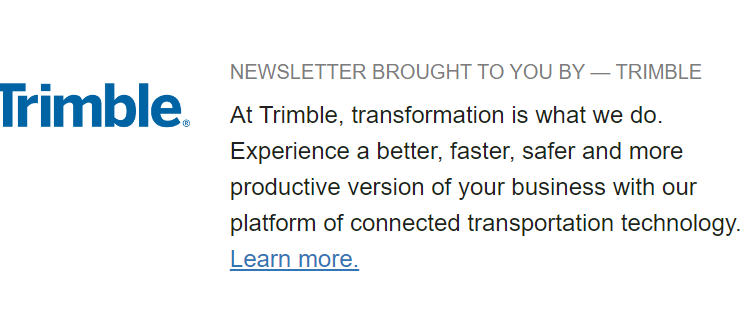ATRI’s ‘Critical Issues in the Trucking Industry’ report spotlights parking woes
(Source: ATRI)
The American Transportation Research Institute recently released its report outlining what over 3,700 industry stakeholder respondents across North America see as the most critical issues facing the trucking industry. The report remarks, “among respondents represented were motor carrier executives and personnel (45.9%), professional truck drivers (31.3%) and other industry stakeholders (22.8%), including industry suppliers, driver trainers, and law enforcement.” The report includes a combined top concerns list and a split version, which polls motor carriers’ and drivers’ concerns separately.
Looking at the combined top concerns, the economy came in first followed by truck parking, similar to last year’s ranking. Third place was lawsuit abuse reform, fourth was insurance cost and availability, and fifth was driver compensation. Notably, the driver shortage fell from fourth place in 2023 to ninth place. From 2017-2021, the driver shortage was the top combined issue among respondents.
Splitting up the respondent data between drivers and motor carriers yields a more nuanced picture of what each side sees as top issues. Truck drivers ranked truck parking first, followed by driver compensation, economy, detention/delay at customer facilities, and speed limiters to round out the top five. For motor carriers, the economy remained the top concern followed by lawsuit abuse reform, driver shortage, insurance cost and availability, and driver retention.
One growing issue that failed to make the top 10 list for overall concerns was driver retention. The report notes, “This is the first year since 2012 that Driver Retention has not been a Top 10 industry concern. As is the case with Driver Shortage receiving its lowest ranking ever this year, this drop from the Top 10 list is likely tied to the freight recession and the broader economy.”
Motive releases first-of-its-kind first responder service for commercial vehicle drivers
(Source: Motive)
ELD and telematics provider Motive recently added a new emergency response feature to its AI-powered Integrated Operations Platform through a partnership with RapidSOS. The first-of-its-kind service is designed to expedite emergency response in the event of a severe collision to quickly dispatch emergency services.
A big factor behind adding the feature was research showing survival rates increase by 13% for every minute that first responders arrive faster at the scene of a collision. Adding to the challenges of getting a rapid response is the fact that 54% of fatal truck collisions occur in rural areas, where it takes an average of 15 minutes and, in worst-case scenarios, upwards of 26 minutes to arrive.
The feature kicks into gear immediately once a collision is detected and verified by a team including over 400 experts, who review the uploaded video of the incident. Safety managers are then alerted with a video of the critical event and telematics data. The partnership with RapidSOS covers 99.99% of the U.S. population and includes 21,000 first responder agencies. The release notes that this helps bypass the wait time fleet managers face when locating and calling local emergency dispatchers.
Additionally, for first responders, the ability to determine the type, location and possible extent of the damages can help determine the right response package, including whether to dispatch fire, police or EMS.
Market update: Cass September data sees signs of price stabilization
Freight audit and payment provider Cass Information Systems recently released its September data, which saw a decline in shipments but an increase in freight expenditures, freight rates and truckload linehaul rates. For truckload linehaul rates, rising spot rates pushed the combined spot and contract index higher 0.3% m/m, breaking a string of declines seen the past four months.
The Shipments Index fell 2.6% m/m seasonally adjusted from August to September. Year over year saw the shipments decline widen from a 1.9% y/y drop in August to 5.2% y/y for September. The report notes that private fleet insourcing remains, as the decline comes as Class 8 tractor sales jumped in Q3 after dealing with Q2 supply constraints. Freight expenditures saw an uptick compared to last month, up 2.4% despite declines in fuel prices. Year over year, the decline moderated from 9% in August to 6.6% in September.
Private fleet expansion and its impact in eroding load opportunities in the for-hire space continues to be a recurring theme. Tim Denoyer, vice president and senior analyst at ACT Research, wrote in the report, “The key theme we’ve been highlighting for more than a year now is the insourcing of freight from the for-hire market to private fleets, which has perhaps been the defining feature extending the soft freight cycle in an economy that has surpassed expectations. The resilience of owner-operators is of course an important part of the story, but operating authority revocations continue apace.”
FreightWaves SONAR spotlight: For dry van freight, it’s a tale of 2 markets
(Source: FreightWaves SONAR)
Summary: The dry van segment appears to be bifurcating following the impacts of two major hurricanes. Spot market rates show early signs of bottoming out while contract dry van outbound tender rejection rates soar. In the past week, the FreightWaves National Truckload Index 7-Day Average remained flat at $2.23 per mile, the same rate as reported on Oct. 7. Dry van outbound tender rejection rates saw the opposite, increasing 35 basis points w/w from 4.8% to 5.15%.
In the contract space, the rise in tender rejection rates also corresponds to a decline in dry van outbound tender volumes. VOTVI fell 215.67 points or 2.59% from 8,321.62 points on Oct. 7 to 8,105.95. For the month, VOTVI is down 418.55 points or 4.91% from 8,524.50 points on Sept. 15.
Whether the increase in dry van outbound tender rejection rates holds will be the key question to watch in the coming weeks. Zach Strickland, head of freight market intelligence at FreightWaves SONAR, wrote on Friday, “October is traditionally a slower month for trucking, making the rejection rate jump that much more significant. The transportation market appeared to still have enough resiliency to handle two major events, but the jury is still out on the third. A lot will be learned about where we are in the current oversupplied freight cycle in the coming weeks, leading into retail peak shipping season.”
The Routing Guide: Links from around the web
J.B. Hunt sees normal seasonality in Q3 (FreightWaves)
ATA economist on trucking: It’s getting a little bit better (Commercial Carrier Journal)
Freightliner adds nifty changes to fifth-generation Cascadia (FreightWaves)
Driver shortage eases again in 2024 ‘for all the wrong reasons’: ATA’s Costello (Trucking Dive)
AB5 notches another win: Supreme Court won’t hear Postmates/Uber case (FreightWaves)
FMCSA moves closer to new registration system (Land Line)
Like the content? Subscribe to the newsletter here.
The post ATRI’s ‘Critical Issues in the Trucking Industry’ report spotlights parking woes appeared first on FreightWaves.















